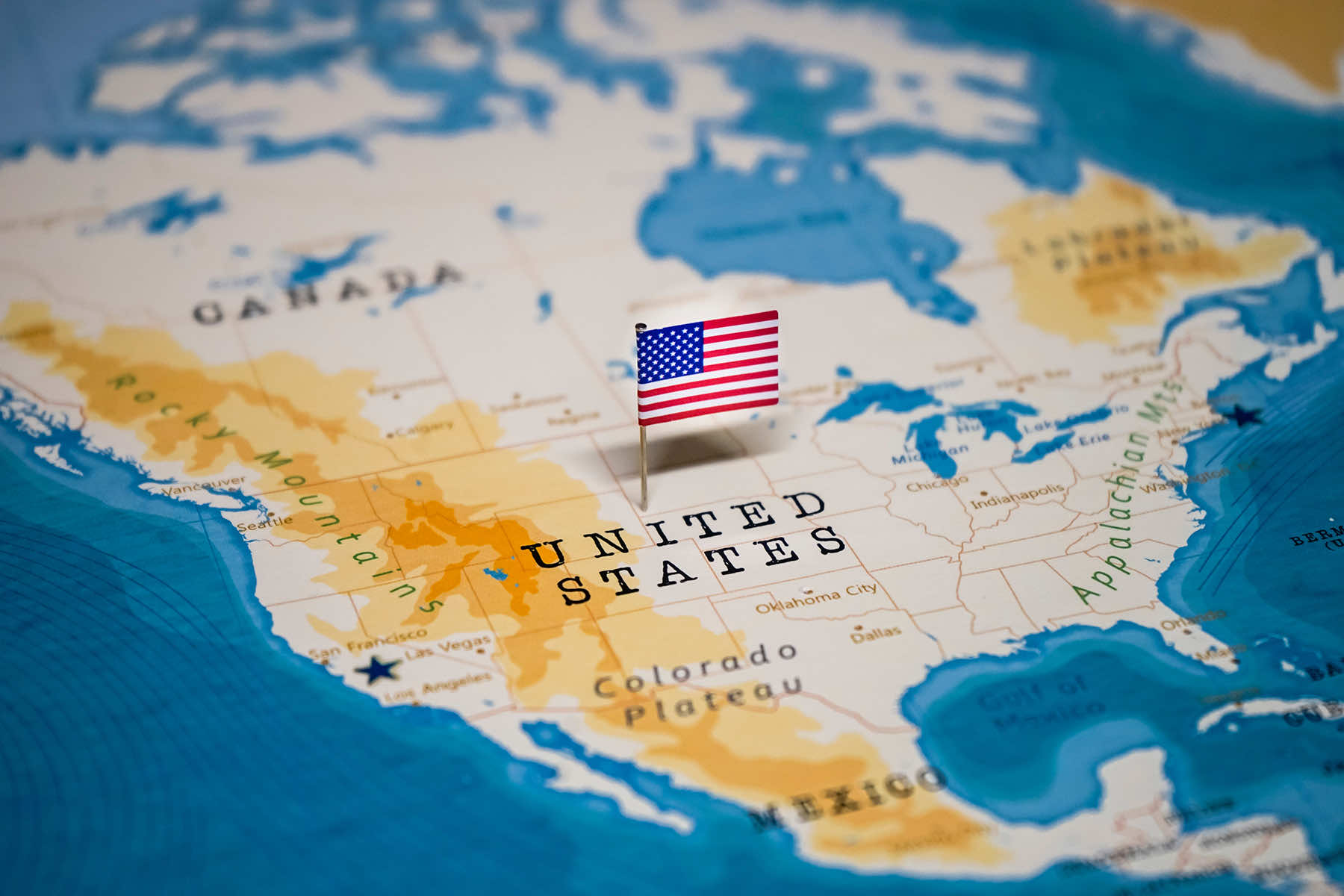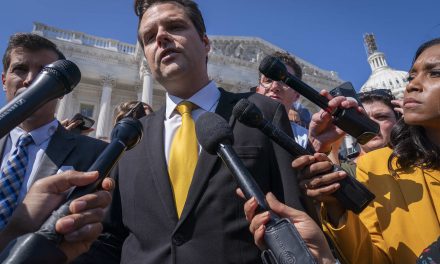
Three republican presidents added new states, in every case to hold onto a Republican Senate. Lincoln did it. Grant did it. Harrison did it. If he gets reelected in 2024, Biden must do it and Democrats need to prepare the ground now.
Recently, Mitch McConnell was on TV telling wealthy donors to a fundraiser in Kentucky, “We’ve got a 50-50 Senate right now. We’ve got a 50-50 nation.”
That weekend, I was listening to an NPR news segment and a Republican politician told a reporter, “America is a 50/50 nation.” I waited for the host to confront him, but not a word.
An hour later I heard it again from a Republican, this time on CNN: “America is a 50/50 nation.”
This is the GOP’s favorite meme — if you listen to the news, particularly the political-leaning shows, you will hear it frequently — and it is a complete lie.
But it’s a useful meme when the GOP wants to convince us it’s normal that every single Republican in the Senate — presumably representing the interest of half of a 50/50 America — blocks everything from expanding healthcare and education to voting rights for minorities, students, and the elderly, to increasing the minimum wage.
Even though they represent 43 million fewer Americans than do the Democrats in the Senate.
And, they’ll tell you, because this kind of obstruction is “normal” in a “50-50 nation” there’s no need for America to add Washington DC and Puerto Rico as states to expand the Senate.
“Don’t get upset about McConnell and the GOP obstruction,” they’re essentially saying. “When half the country doesn’t want something and it thus deadlocks Congress, that’s just the way things are supposed to work in a democratic republic. Just wait until your side has an actual majority, and then you can get things done. Until then, just shut up and go watch HBO.”
But there’s a crisis here, it’s real, and it’s getting worse. and it can’t be papered over by this “America is a 50-50 nation” lie.
- By 2040, 50% of America will live in 8 democratically-controlled states and only be represented by 16 out of 100 US Senators, creating an unbeatable majority for the GOP.
- During the Civil War Abraham Lincoln and the GOP added Nevada, for purely partisan reasons, when it didn’t even qualify as a state.
- Republican presidents did it again with three more states — Colorado and both Dakotas — just to add enough Republicans to the Senate to maintain GOP control throughout the 19th century.
- Adding Washington DC and Puerto Rico as states will not only help the senate reflect who America is, but also gives representation to American citizens who currently have no voice.
- With a more representative Senate, Trump’s impeachment (and perhaps Thomas’), Medicare For All, the end of student debt, and a Green New Deal would all have been done by now.
America is not a 50/50 nation. Not even close.
This disparity is most visible in the Senate, where the 10 most populous states (California, Texas, Florida, New York, Illinois, Pennsylvania, Michigan, Ohio, Georgia, and North Carolina) have half the US population — 179 million people — but control only 20 percent of the vote in that body. California, with about ~40 million people, has the same two Senate votes as Wyoming with 583,200 people.
Put another way, 42 Senators today represent 21 states whose aggregated total populations are smaller than the single state of California, which is represented by only two Senators (one of whom is currently out of commission).
The ten least populous states have a combined 7.9 million residents but throw equal weight in the senate to the ten representing 164 million Americans. And this is democracy?
A mere 18 percent of Americans today could theoretically elect a Senate majority (at the founding of our republic it would have taken 30 percent), and, as the Roosevelt Institute notes:
“For treaties and other measures requiring a supermajority two-thirds vote, senators representing only 7 percent of the population could block changes supported by legislators representing the remaining 93 percent of the population.”
That’s the theoretical number based on how disproportionate the size of our states are. The actual number based on which parties control which states today is also grim.
Democrats in the US Senate represent fully 43 million more Americans than do Republicans.
But because Republicans have focused, since the 1950s, on control of a large number of low-population states with inexpensive media markets where it’s cheap to own radio stations and newspapers, the last time Republicans in the Senate were elected to office by a plurality of American voters was 1952.
The Senate has over-represented Republican voters every year since then, and the situation has gotten worse every year. This has been a steady trend since the Republican Great Depression.
Thus, when Republicans choose to enforce the filibuster, they effectively disenfranchise a clear and substantial majority of American voters.
The Roosevelt Institute sums it up, noting that the filibuster is designed in a way that is “allowing senators representing 10 percent of the population to block legislation supported by the other 90 percent.”
Because of aggressive gerrymandering, the situation in the House is also a challenge to democratic representation. As the Brookings Institution found in 2017:
“Democrats over-represent blue states … by 19 seats, whereas Republicans over-represent true red and flipped blue states by 40 seats.”
And it’s gotten a lot worse in the five years since them, because of another round of aggressive partisan gerrymandering, approved by Republicans on the Supreme Court, following the 2020 census.
Not to mention the Electoral College, which aggregates the votes of the House and the Senate and would thus be influenced by expanding the Senate.
The last Republican elected to the White House with a majority of the vote of the American people was George HW Bush in 1988.
His son, George W. Bush lost in 2000 by a half-million votes before five Republicans on the Supreme Court gave him the White House, and Donald Trump lost in 2016 by 3 million votes.
This situation is not only not getting better, it’s getting worse as more and more Americans move to higher-quality-of-life Blue states but small Red states hang onto their gerrymanders in the House and their two representatives in the Senate.
If the US Senate was actually representative of America, the conviction of Donald Trump for inciting insurrection would have been assured. As would passage of Medicare for All, Free College, voting rights for all Americans, and a Green New Deal.
But it’s not. And things are about to get a whole hell of a lot worse.
The Democratic Party is facing a crisis that it’s experienced only once before in its history: within the next two decades, half of the population of the United States will live in just eight mostly-Democratic-controlled states and be represented by only 16 (out of 100) US senators.
The GOP, if their dominance in low-population states holds, will have an unbeatable majority in the Senate for generations going forward. There is history here, and Democrats need to learn it fast.
As our country was adding new states in the 19th century, the population threshold necessary for statehood was the same as that for a single member of the House of Representatives. In 1864, that was 125,000 residents.
But during the Civil War, Abraham Lincoln and his Republican Party (which controlled both the House and Senate at the time) needed 2 more senators to assure their continued control of the Senate when the Civil War was over.
To remedy that political problem, in 1864 Lincoln and his Republicans in Congress brought the Nevada Territory into the Union as a state — even though there were only 7,000 “legal residents” then living in that territory.
Had Republicans waited until Nevada had enough residents to qualify for a single House seat and two senators, it wouldn’t have been admitted as a state until 1970.
But Nevada added two Republican senators (and a House member), giving Lincoln’s GOP solid control over the Senate for a generation.
(Lincoln also added West Virginia in 1863, splitting it from Virginia, although the new state then had over 300,000 residents so it qualified for statehood, unlike Nevada. But that gave him a total of 4 new Republican senators and set the example of splitting a state to double the number of senators.)
Twelve years later, in 1876, the Republicans were in danger of losing the Senate again. To solidify that GOP majority, Republican President Ulysses S. Grant and his party granted Colorado — with a mere 40,000 residents — statehood.
Republicans doubled down on the process again in 1889, when they’d just seized the White House back from Democratic President Grover Cleveland.
Republican President Benjamin Harrison not only admitted the Dakota Territory into the union but split it in two to produce four senators and two representatives for the GOP. (North Dakota had 36,000 residents in the census of 1880; South Dakota had 98,000.)
Thus, in roughly 40 years the GOP added eight US senators, largely cementing their control of the Senate until the Republican Great Depression; from Lincoln’s inauguration in 1861 until 1933, Democrats controlled the Senate for only eight years.
Democrats must do the same in 2025 — add at least two states to expand their majority in the Senate — if they can hold a majority in the House and expand their control of the Senate with the 2024 election.
All it takes to add a state is that territory passing a referendum asking for statehood (already happened for DC and Puerto Rico needs one more official vote), a simple majority vote in the House and Senate, and the President’s signature.
Almost half of our states have fewer than four million people, with 14 of them having fewer than two million, and generally the least populous states are the most rural and the most reliably Republican.
To fix this undemocratic imbalance, the District of Columbia and Puerto Rico must become states as soon as possible.
“Taxation without representation” is proudly displayed on the license plates of vehicles registered in Washington, DC. It’s ironic, considering that the city is the capitol of a nation birthed in the colonial times with cries of, “No taxation without representation!”
Though residents in Washington, DC pay federal taxes and the District has more citizens than either Wyoming or Vermont, DC is not a state, has no votes in Congress, and has had only three Electoral College votes since the 1961 passage of the 23rd Amendment.
Puerto Rico, with several times the population of Wyoming or Vermont, is in a similar situation, although residents of the territory don’t generally pay federal income taxes. In a 2017 referendum, 97 percent of the island’s residents voted in favor of statehood.
And if Democrats want to really imitate Lincoln’s political coup to solidify control of the Senate, they could add a third state.
One of the real breakout stars among the House Impeachment Managers, Delegate Stacey Plaskett, represents the US Virgin Islands in Congress. Like DC’s Eleanor Holmes Norton, she has no vote, but she can speak up during House debates.
The US Virgin Islands have a bit over 100,000 residents, which easily fits into the historic population ratios Republicans used to add Nevada, Colorado, and both Dakotas as states, all just to get more senators.
While a harder lift, the Virgin Islands should be considered for statehood, too, if for no other reason than to balance out the 39 million Californians who have only two US Senators.
And if we really wanted to stretch it, there are other US territories including American Samoa, Guam, and the Northern Mariana Islands that could become individual states or be admitted collectively as one state.
The people of both Puerto Rico and Washington DC want the places where they live to become states, and Republicans are terrified at the prospect because both places vote overwhelmingly Democratic.
Statehood for those two would add four Democratic senators, producing a Senate that somewhat more accurately reflects the overall American electorate, and would effect the electoral college in a more democratic way. And adding the US Virgin Islands would make the Senate much closer (but still not there) to being representative of the overall American population.
Republicans will predictably scream that adding states will diminish the overwhelming power the GOP has relative to the US population they represent in the Senate.
Those screams should be met by pointing out how both DC and Puerto Rico easily meet the population threshold necessary for statehood.
And when Republicans start squealing about the “tiny” US Virgin Islands (or the others mentioned) being added, Democrats should simply lay out the historical facts about how Republicans ignored those population thresholds to bring Nevada, Colorado, North Dakota, and South Dakota into the union just to maintain a GOP grip on that body.
Either our American republic operates as a democracy or we don’t. It’s been an ideal since our founding, and every generation until the Reagan Revolution of the 1980s has moved us forward in that direction.
This was a big topic of discussion at the Constitutional Convention during the summer of 1787 in Philadelphia.
Maryland’s representative Luther Martin argued that regardless of population each state should be considered an “equal contracting party,” but James Wilson of Pennsylvania replied, “Can we forget for whom we are forming a government? Is it for men, or for the imaginary beings called states? … If the Government be not laid on this foundation, it can be neither solid nor lasting.”
Nonetheless, the small states prevailed, and it didn’t really become a crisis until the era of Lincoln. It’s a double crisis now.
With the federal government contemplating and enacting everything from how we get our healthcare, to who can marry, to the rights of queer people and those of color, isn’t it even more important today than it was in 1789 to have a Senate that at least approximates representation of the majority of Americans?
The Senate, as currently configured, is profoundly anti-democratic (a crisis amplified by the filibuster), and adding two or three states will only partially correct that, but it’s still a big step toward a More Perfect Union.
Congressman Raul Grijalva just submitted legislation in the House of Representatives to speed up the process for Puerto Rico. Kevin McCarthy won’t advance it, but Democrats need to keep this alive to prepare the ground to act in 19 months if they can hold the Senate and take back the House in the upcoming election.
Hyotographics / Shutterstock
© Thom Hartmann, used with permission. Originally published on The Hartmann Report as Why Democrats Must Add 3 More States
Subscribe to The Hartmann Report directly and read the latest views about U.S. politics and other fascinating subjects seven days a week.














